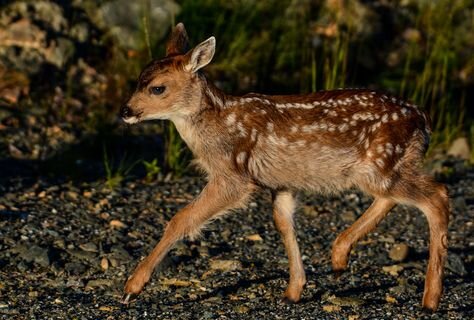**Nature Nugget**
For those of us fortunate enough to live on the coast, we are surrounded by a wealth of animals. And during the spring, if we are really lucky, we might even get to spot one of these adorable little fawns beside a local trail or feeding along tree-lined edges, where they can quickly disappear into the forest if they're threatened.
The dominant deer population of the peninsula is the black-tailed deer, currently recognized as a subspecies of the mule deer. Adult black-tailed deer are reddish-brown in summer and brownish-gray during winter. They have large ears that move independently of each other, and a broad triangular tail with a dark brown or black top and a white underside.
Black-tailed fawns are born from late spring to mid-summer and are spotted at birth, but lose their spots within a few months. They are born weighing around 6 to 8 pounds, and have no scent for the first week or so. This enables the mother to leave the fawn hidden while in search of food to replenish her own body after giving birth and to produce enough milk to feed her young. Fawns are weaned in the fall after about 60-75 days, but continue to stay with their mothers during the first year. Males begin growing their antlers at approximately 6 to 8 months old. These become full-size antlers in four to five years. Male deer leave the family group when they reach maturity, at about 18 months old. Females reach sexual maturity at about two years old.
Bucks do not participate in raising the fawns. Instead they generally travel together in all-male groups for the summer. Does and their fawns form small family groups, led by the oldest mother.

